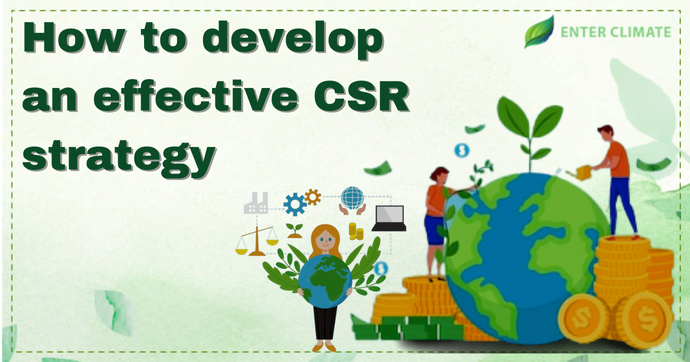What is Environmental Social Management Framework (ESMF)?
 12 Apr, 2023
12 Apr, 2023 
Big projects need a stable funding mechanism in various stages of planning, budgeting, management functions, enhanced human resource development and increased organizational efficiency. It helps them ensure that all operations of an organisation are environmentally and socially sustainable in line with Environment and social safeguards Policy and Framework of National and International or Multilateral Financial Institutions (MFIs). State Projects that are financed under the World Bank’s Investment Policy Financing (IPF) need to comply with the Environmental and Social Standards (ESSs) of the World Bank’s Environmental and Social Framework (ESF). World Bank approved the Environmental Social Management Framework (ESMF) on August 4, 2016. This framework includes a Vision for Sustainable Development, ten Environmental and Social Standards (ESSs) that establish the guidelines for Borrowers, an Environmental and Social Policy for Investment Project Financing (IPF), which outlines the rules for the Bank and a Directive on Addressing Risks and Impacts on Disadvantaged Individuals or Groups. It is mandatory for all IPF projects that began on or after October 1, 2018, to follow this framework.
Relevance of Environmental Social Management Framework
The Framework of Environmental Social Management is guided by international standards and principles, such as those developed by the International Finance Corporation and the World Bank. These standards include the IFC Performance Standards on Environmental and Social Sustainability, which provide a framework for managing environmental as well as social risks and impacts in project finance, and the World Bank Environmental and Social Framework, which offers a set of policies and standards for managing environmental and social risks and impacts in World Bank-funded projects.
Objective of Environmental Social Management Framework
The objective of the Environmental Social Management Framework is as follows:
- The Environmental and Social Framework (ESF)[1] prioritizes reinforcing national environmental as well as social management systems and institutions while also assisting in developing the Borrower’s capacity.
- This framework also advocates for greater transparency and stakeholder involvement through the timely release of information, consultations with stakeholders throughout the project’s lifespan, and effective grievance mechanisms to address the concerns and complaints of those impacted by the project.
- The Environmental and Social Framework (ESF) aids in developing sustainable and inclusive projects by enhancing safeguards for individuals and the environment.
- It makes notable strides in various areas, including labour, inclusivity, non-discrimination, climate change, biodiversity, community health and safety, and stakeholder engagement.
Factors Affecting Environmental Social Management Framework
The Factors affecting Environmental Social Management Framework are as follows:
- For Air Pollution: specifying any expected atmospheric gas emissions from sub-project implementation, either during construction or sub-project operation. Provide information about how these emissions will be controlled and, if so, the control methods.
- For Water Pollution: indicating any anticipated wastewater discharges to surface waters or groundwater that may occur from sub-project implementation, either during construction or sub-project operation. Additionally, provide information regarding the nearest sources of drinking water. If these discharges are treated, describe the treatment process that will be used.
- For Solid Wastes: Describe the type of solid waste generated during the construction or operation phases of the sub-projects. Categorize these wastes as either hazardous or non-hazardous. Additionally, describe the methods for managing each type of waste (e.g., recycling, use as raw materials, burial, incineration, etc.).
- For Occupational Health and Safety Issues and Social Impact (if applicable): Describe the sub-borrower’s measures to ensure workers’ safety and health. This includes measures to prevent and control occupational hazards such as the general design and operation of the facility, training and communication, physical, chemical, radiological, and biological hazards, personal protective equipment, safety inspections, and surveillance of the work environment and worker health.
Key Components on Environmental Social Management Framework
| Component | Description |
| Objectives | Outline the goals and desired outcomes of the Environmental and Social Management Framework. |
| Scope | Define the projects, activities, or programs that apply to the framework |
| Environmental and Social Risks and Impacts | Identify potential risks and impacts of the project or activity on the environment and communities, including health and safety risks, social impacts, and climate change impacts. |
| Mitigation Measures | Detail strategies to avoid or minimize the identified risks and impacts, including best practices, technological solutions, and regulatory compliance |
| Monitoring and Reporting | Establish protocols for monitoring the effectiveness of mitigation measures, assessing ongoing risks and impacts, and reporting to stakeholders, including the frequency and format of reporting. |
| Stakeholder Engagement | Define mechanisms for engaging with and responding to stakeholder concerns and feedback, including participation in decision-making, communication and consultation plans, and grievance mechanisms. |
| Capacity Building | Outline plans to enhance the capacity of project staff, local communities, and other stakeholders to implement and comply with the framework, including training, education, and awareness-raising activities. |
| Compliance and Enforcement | Establish procedures for ensuring compliance with applicable laws, regulations, and policies, as well as consequences for non-compliance, such as corrective action plans or termination of the project or activity. |
| Review and updating | Specify the frequency and process for reviewing and updating the framework to reflect changing conditions, stakeholder feedback, and new information, including the roles and responsibilities of project staff and other stakeholders in the review process. |
Conclusion
Environmental Social Management Framework ensures that development projects are implemented responsibly and sustainably. It helps identify, assess, and manage a project’s potential environmental and social risks and impacts, promoting stakeholder engagement and participation, compliance with laws and regulations, protection of human health and safety, and long-term sustainability. By taking a comprehensive and systematic approach to managing environmental and social risks and impacts, ESMF can help to minimize adverse effects on the environment as well as local communities while maximizing the positive benefits of a project over the long term.
Read our Article: Overview Of India’s Biodiversity And Climate Goals













